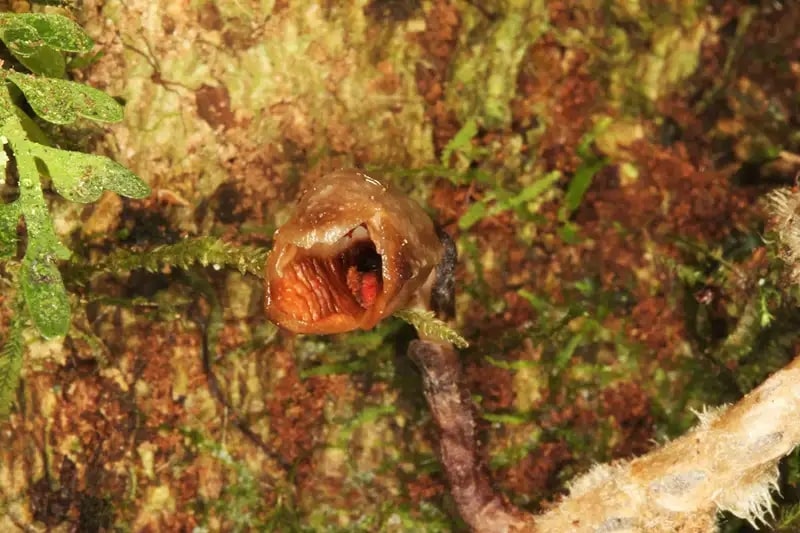
Flowers are usually decorative pieces for every occasion. They serve to freshen up someone’s day or house, or office.
However, there are types of flowers that have been unanimously deemed ugly because of their weird shape or color, the foul odor they emit, or their carnivorous or parasitic nature.
To pique your curiosity, we have rounded up the 20 ugliest flowers in the world right here.
20 Types of Ugly Flowers
1. California Pitcher Plant (Darlingtonia californica)
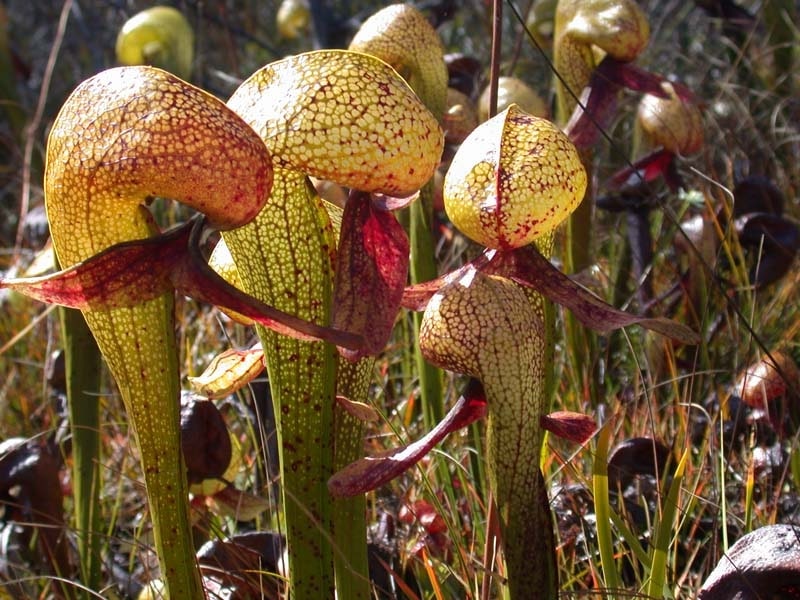
| Scientific Name | Darlingtonia Californica |
| Common Name | California pitcher plant, cobra plant, cobra lily |
| Family | Sarraceniaceae |
| Distinct feature | Translucent balloon-like flowers |
The California pitcher plant is carnivorous. It has tubular leaves shaped like a rearing cobra used to trap its insect prey.
The Darlingtonia Californica also produces flowers that hang down from the top of its stalk. The cobra lily’s flower has purple-red hued petals with a small opening at the peak for its pollinators.
The cobra plant is native to Northern California and Oregon in the United States.
2. Ophrys Regis-Ferdinandii (Ophrys speculum)
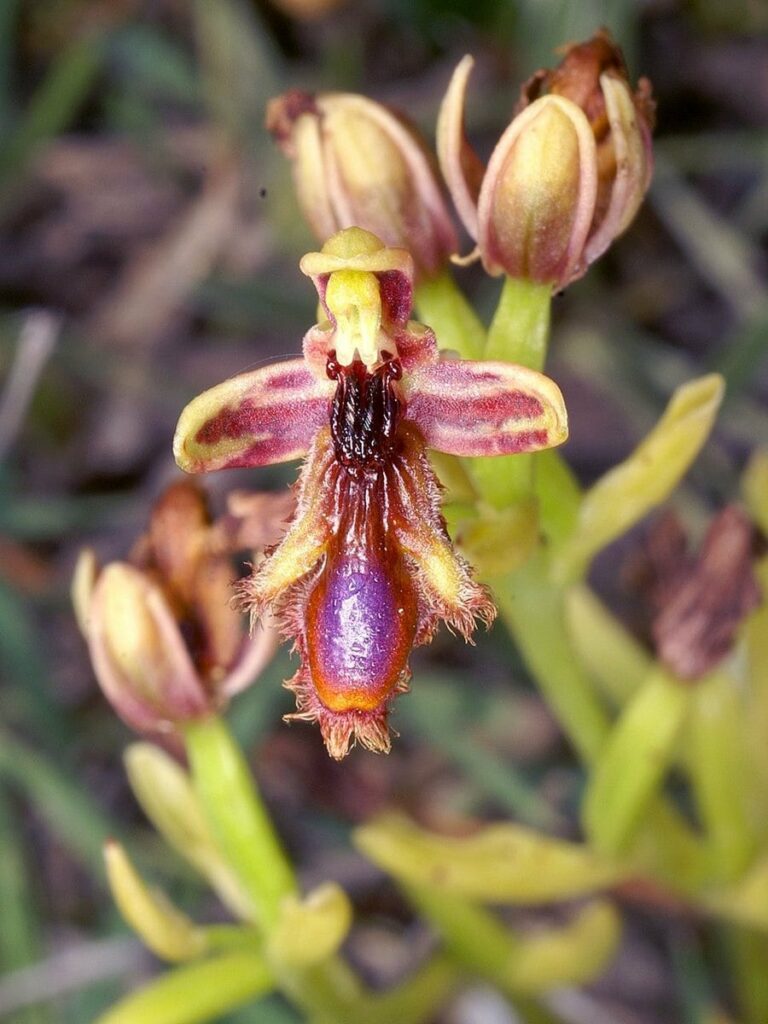
| Scientific Name | Ophrys speculum |
| Common Name | Ophrys Regis-Ferdinandii, Mirror orchid, Earwig orchids, King Ferdinand’s orchid |
| Family | Orchidaceae |
| Distinct feature | Lip of the flower is recurved and divided into 3 lobes |
The flowers of the mirror orchid look like a furry earwig that feeds on the plant.
The Orphys Regis-Ferdinandii can only be found in Turkey and eastern Aegean islands.
This plant only grows up to 30 centimeters (12 inches) in height.
3. Corpse Flower (Amorphophallus titanum)
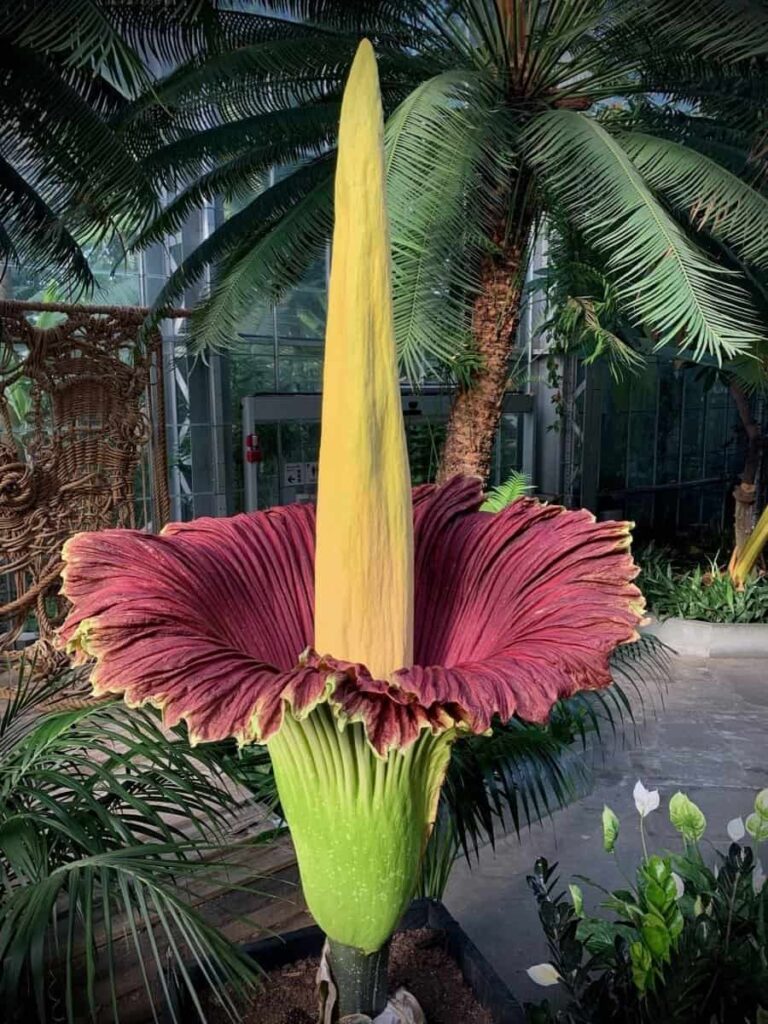
| Scientific Name | Amorphophallus titanum |
| Common Name | Corpse flower, Titan Arum |
| Family | Araceae |
| Distinct feature | Emits rotting meat fragrance from a spadix of flowers wrapped by a red spathe |
The corpse flower is the world’s largest and smelliest unbranched inflorescence. This plant emits a rotting meat fragrance in a spadix of flowers wrapped by a red spathe, similar to a large petal.
It is native to the rainforests of Sumatra, Indonesia.
The inflorescence, or the arrangement of the plant in the floral axis grows over 10 feet (3 meters) tall.
There are smaller flowers inside the corpse flower which produce oils that attract insects for pollination.
The Titan Arum does not have a definite flowering period. It can take more than 10 years before it blooms again and once it does, the flower only lives for less than 2 days.
4. Zulu Giant (Stapelia gigantea)
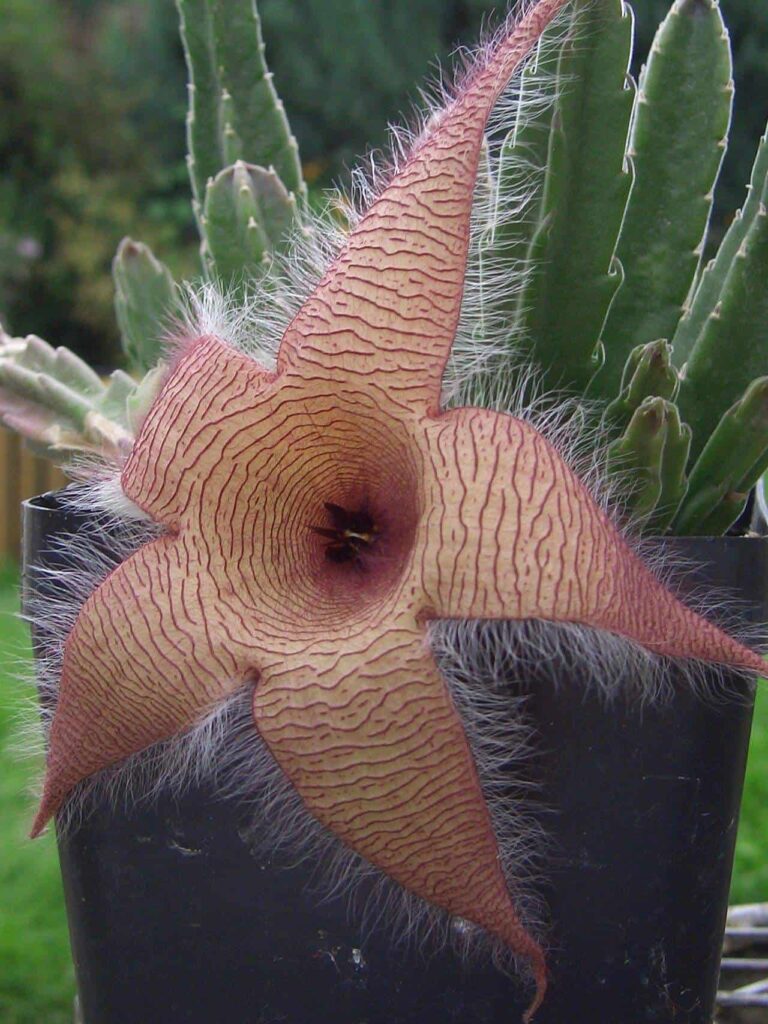
| Scientific Name | Stapelia gigantea |
| Common Name | Zulu giant, carrion plant, toad plant, starfish plant, starfish flower |
| Family | Apocynaceae |
| Distinct feature | large star-shaped five-petalled red, yellow, wrinkled flowers |
The Zulu giant is a succulent that can only be found in the deserts of South Africa and Tanzania.
The flower of Stapelia gigantea is shaped like a star with five yellow-cream-colored petals. Its petals have red line patterns, with its surface wrinkled and with long hairs.
The starfish plant also emits a foul, rotting-meat-like odor as means to attract pollinating insects.
5. Black Bat Flower (Tacca chantrieri)
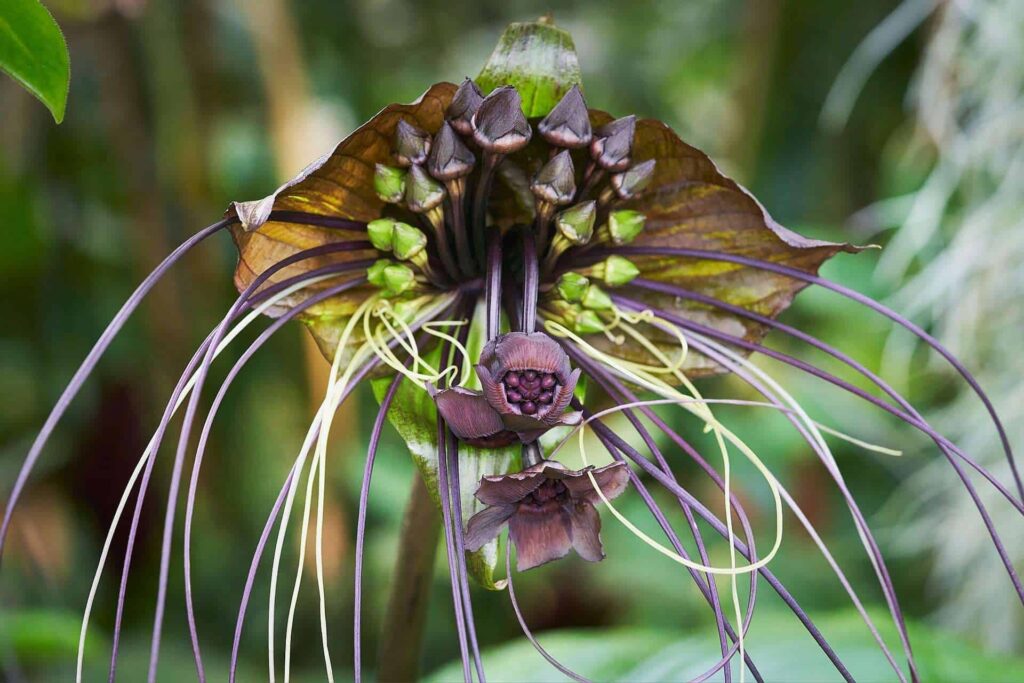
| Scientific Name | Tacca chantrieri |
| Common Name | Black bat flower |
| Family | Dioscoreaceae |
| Distinct feature | Bat-shapes flowers with long whiskers |
The black bat flower is native to the tropical parts of Southeast Asia.
Shaped like a bat, it has a dark purple color with long whiskers that can grow up to 28 inches (70 centimeters) in length.
6. Giant Padma (Rafflesia Arnoldii)
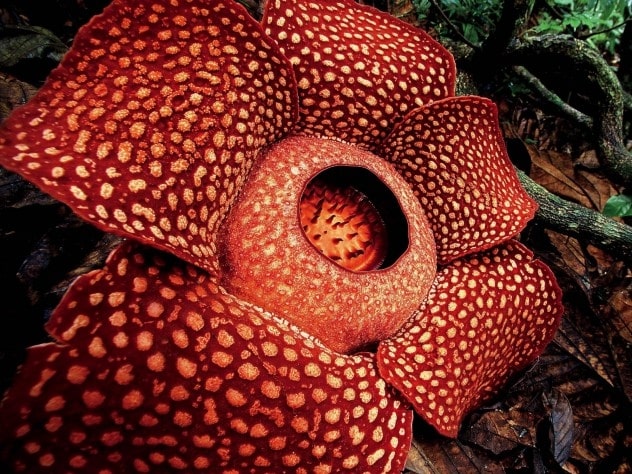
| Scientific Name | Rafflesia Arnoldii |
| Common Name | Giant Padma, Rafflesia, kerubut, candawan biriang |
| Family | Rafflesiaceae |
| Distinct feature | large, cabbage-like, maroon or dark brown bud flower |
Rafflesia is a parasitic plant which attaches to a host to obtain water and nutrients. It has no stem, leaves, or roots and leaves – only the fleshy flower above the ground.
This flower also releases a rotting meat odor to attract pollinating insects.
It is also known as the largest flower in the world, with a diameter of 3.3 feet or (1 meter).
The Giant Padma is native to the rainforests of Borner and Sumatra, Indonesia.
7. Pelican Flower (Aristolochia grandiflora)
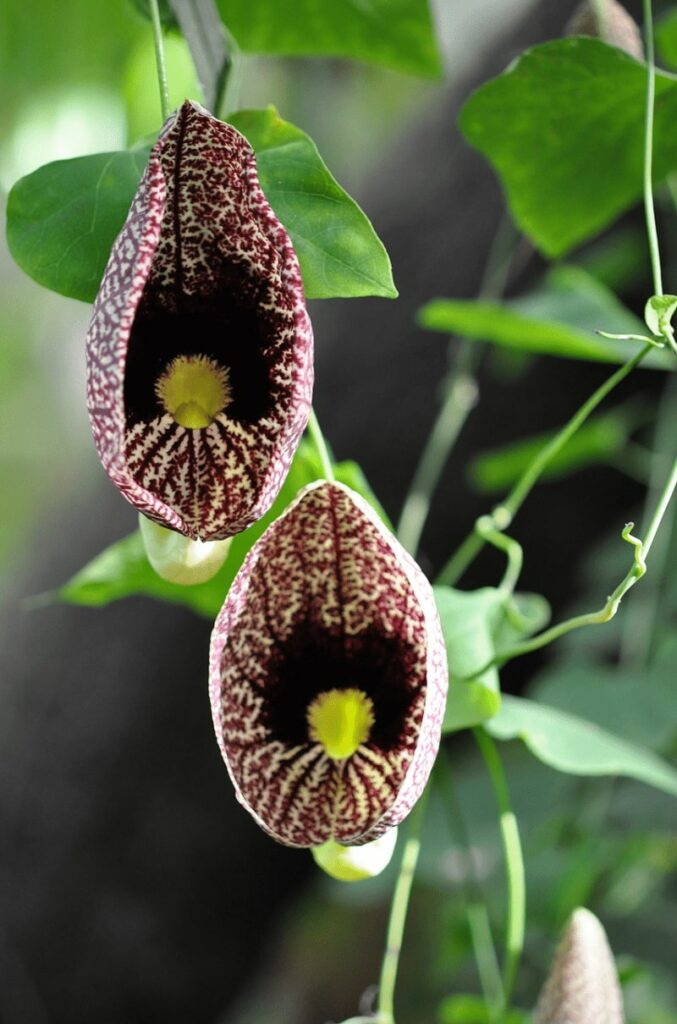
| Scientific Name | Aristolochia grandiflora |
| Common Name | Pelican flower, Brazilian Dutchman’s pipe |
| Family | Aristolochiaceae |
| Distinct feature | large solitary purple or brown veined flowers |
The Aristolochia grandiflora consists of large, velvet-colored flowers with white veins.
They also emit an unpleasant odor that attracts insects like flies and beetles to pollinate.
The Pelican flower is native to Central America and the Caribbean. It is a vine plant that usually grows in streams and gullies in tropical forests.
8. Birthwort (Aristolochia labiata)
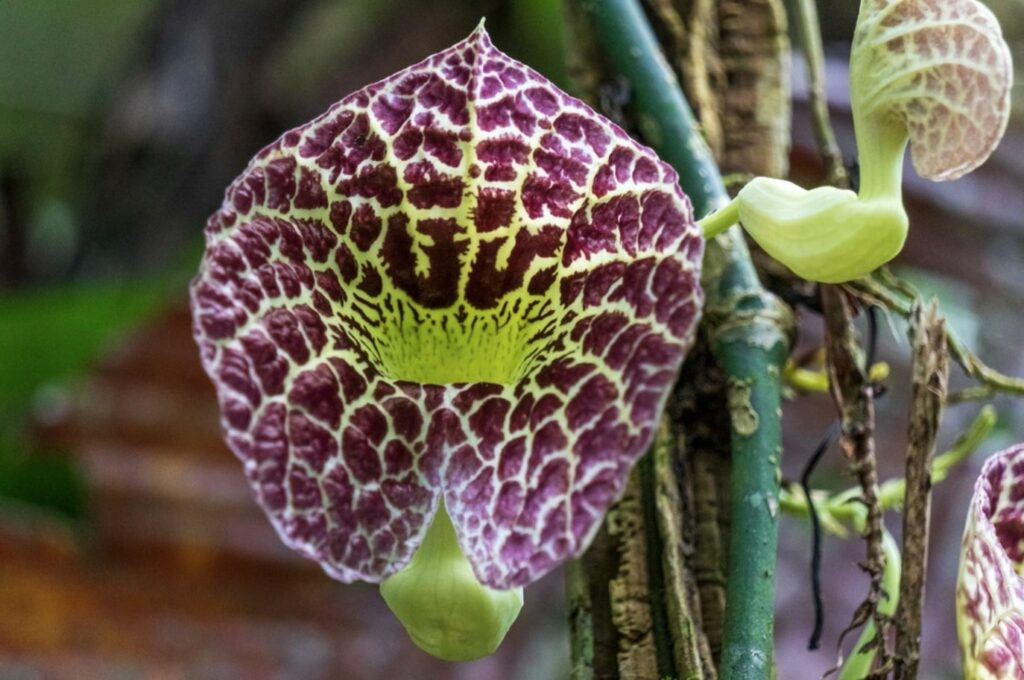
| Scientific Name | Aristolochia labiata |
| Common Name | Birthwort, pipevine or Mottled Dutchman’s pipe, rooster flower |
| Family | Aristolochiaceae |
| Distinct feature | tongue-shaped, brightly colored lobe |
The Birtwort is a perennial herb, indigenous to Brazil.
Although not carnivorous, it has a tubular tongue-like structure that it uses to trap insects for pollination.
It is also a capsule fruit where it stores it endospermic seeds.
9. Monkey Cups (Nepenthes)
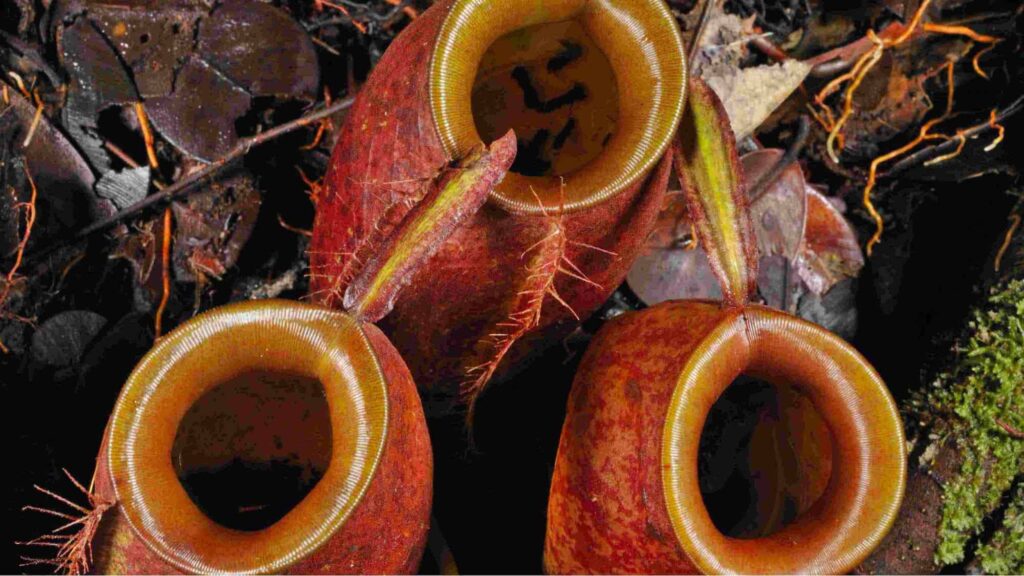
| Scientific Name | Nepenthes |
| Common Name | tropical pitcher plants, monkey cups |
| Family | Nepenthaceae |
| Distinct feature | Pitcher with a small bud that evokes a champagne flute |
Monkey cups are hanging carnivorous plants native to North America, Australia, and Southeast Asia.
These pitcher plants have long green cup-like flowers which function as a trap for small insects. They use the nectar inside the tube to attract insects.
Once inside, the tiny hairs at the bottom of the tubular structure prevent the insects from escaping and lead to drowning them.
10. Bladderwort (Utricularia)
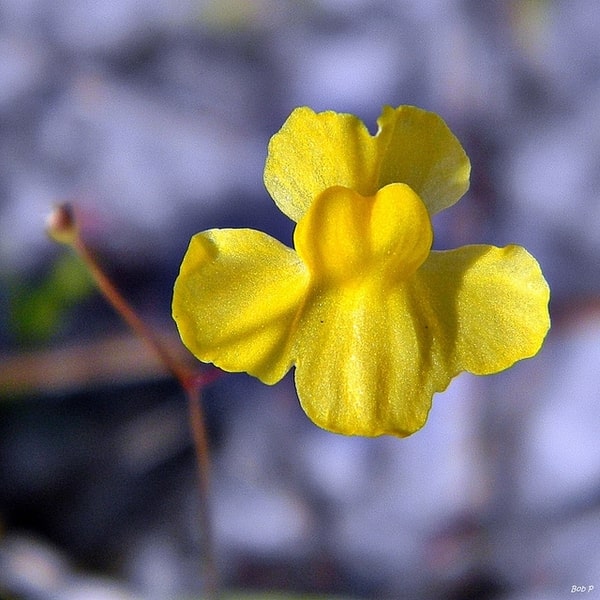
| Scientific Name | Utricularia |
| Common Name | Bladderwort |
| Family | Lentibulariaceae |
| Distinct feature | tiny yellow snapdragon-liked flowers with slender stalks |
The Utricularia comes from a large group of carnivorous plants. It has hollow traps, called the “bladders,” which catch its prey for food in not more than 3 milliseconds.
The hairs on the door of these bladders prevent the tiny organisms like larvae of mosquitoes or water fliesx from escaping.
Bladderworts are known to have originated in North America.
11. Strangler Fig (Ficus aurea)
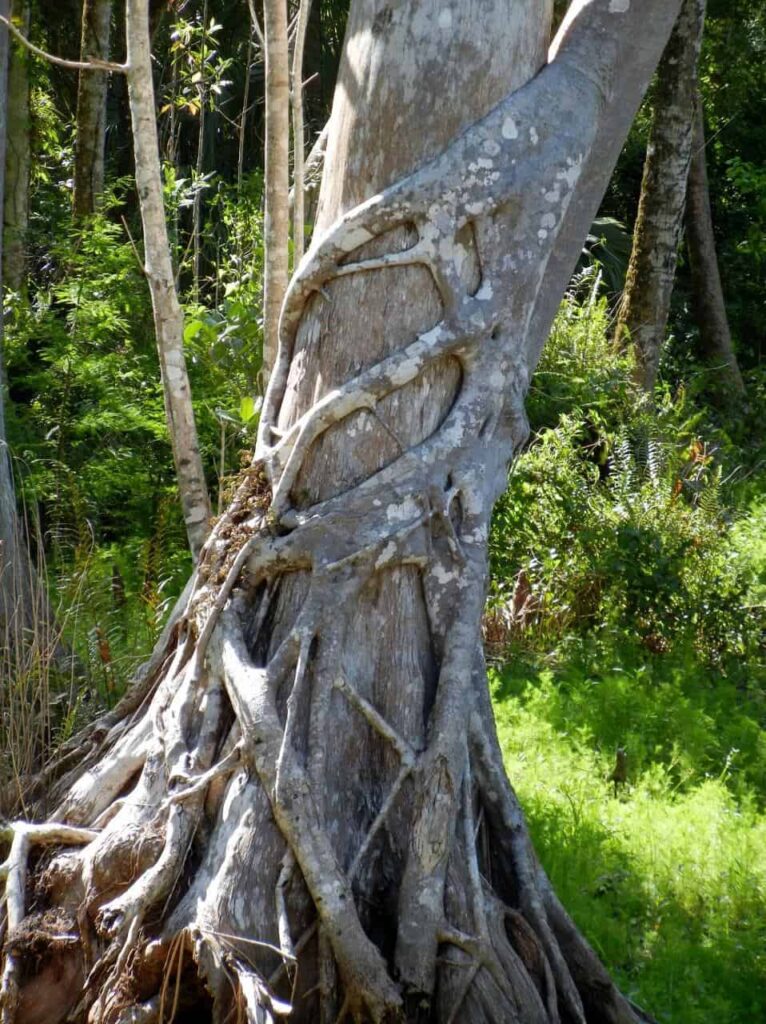
| Scientific Name | Ficus aurea |
| Common Name | strangler fig, golden fig, higuerón, matapalo |
| Family | Moraceae |
| Distinct feature | Wraps around the grows on the host tree |
Strangler figs are parasitic in nature. They grow and cover a host plant from top to bottom until it gets suffocated to death.
In the end, the trunk of the host tree is covered by the root-like structure of the strangler fig. The center of this plant remains hollow and is a common breeding ground for bats and rodents.
Strangler figs are usually found in tropical rainforests.
12. Tree Tumbo (Welwitschia mirabilis)
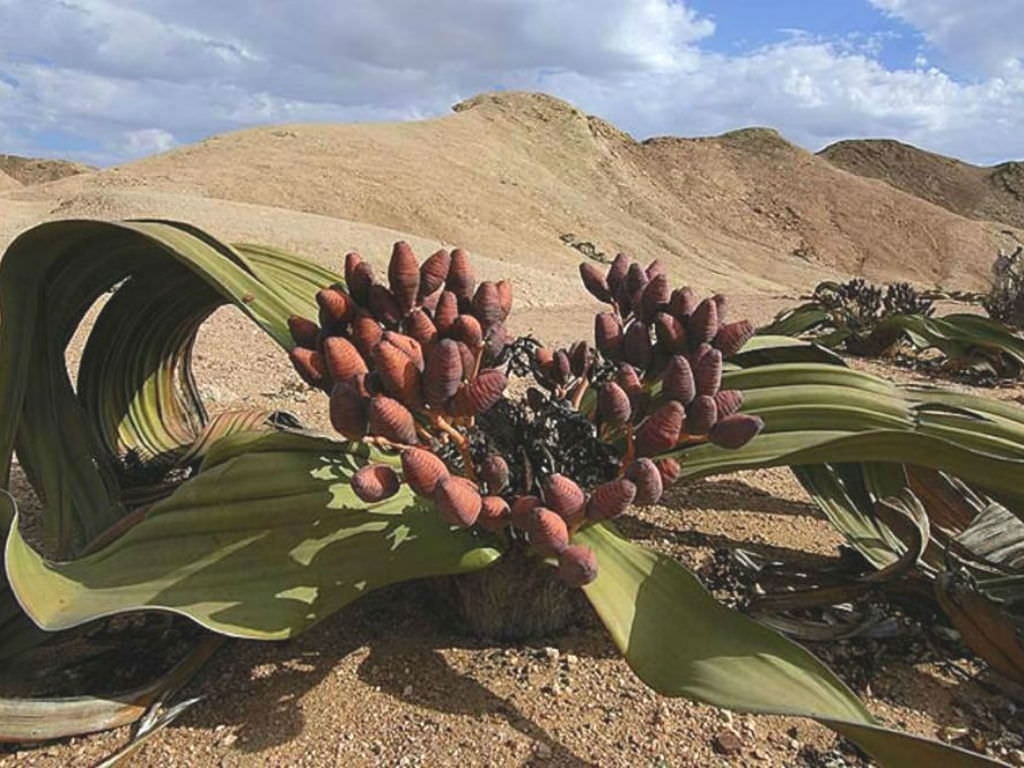
| Scientific Name | Welwitschia mirabilis |
| Common Name | Tree Tumbo, tumboa, kharos, khurub |
| Family | Welwitschiaceae |
| Distinct feature | Two leathery, broad, strap-shaped leaves that become a ribbon as they age |
The Tree Tumbo looks like a dying and wilting plant indigenous to the Namib Desert in Africa.
It has brown and green leaves with a root structure similar to a carrot.
Its root tends to grow more than 30 meters below the ground. This prevents the tumboa from getting uprooted due to the strong desert winds.
13. Stinky Squid (Pseudocolus fusiformis)

| Scientific Name | Pseudocolus fusiformis |
| Common Name | Stinky Squid |
| Family | Phallaceae |
| Distinct feature | Three or four upright arms that join together at the top |
The stinky squid is a red mushroom with three to four stems growing from the ground. Its stems are joined at the top.
The Pseudocolus fusiformis has a reddish-orange color and is covered by slime that smells like manure.
It is a toxic and inedible type of red mushroom. Records showed that some dogs who ate the stinky squid experienced stomach problems, while others died after eating a large amount.
14. Karas Mountains Living Stone (Lithops karasmontana)

| Scientific Name | Lithops karasmontana |
| Common Name | Karas Mountains Living Stone, stone plant |
| Family | Aizoaceae |
| Distinct feature | Stemless leaves that resemble grey stones with brown mottling surface |
The Karas Mountains Living Stone is an inedible succulent plant that resembles brain matter or gray stones with brown mottled surface. They are tiny pebbles with a crack in the middle.
This plant grows in clumps while being submerged in soil.
The stone plant is indigenous to Southern Africa and usually grows on the crevices of rocky desert and mountains.
15. Sea Onion (Albuca bracteata)
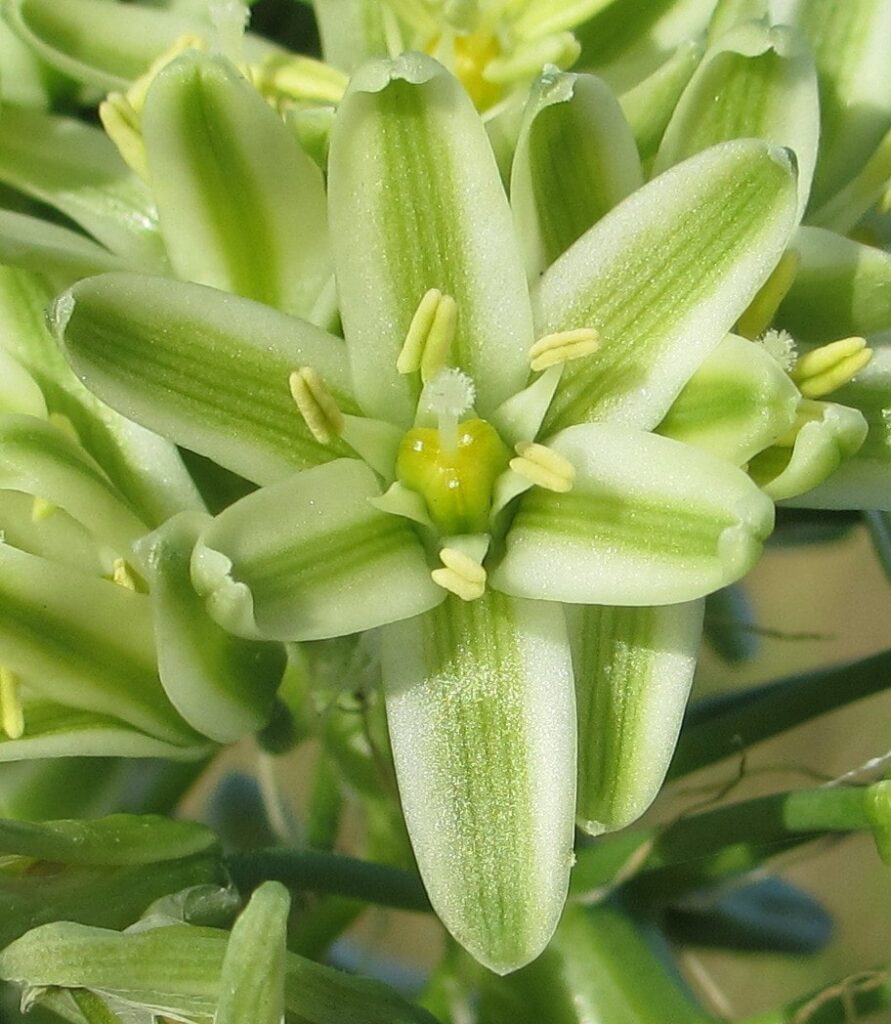
| Scientific Name | Albuca bracteata |
| Common Name | pregnant onion, false sea onion, sea-onion |
| Family | Asparagaceae |
| Distinct feature | Star-shaped greenish-white flowers with a bulky bulb in the middle |
The sea onion has a bulb with light brown scales and sprouts long thick vines in the summer.
As the skin of the bulb peels off during winter, the star-shaped greenish-white flowers bloom.
Sea onions are toxic and inedible. Its sap causes skin irritation.
16. Vegetable sheep (Raoulia rubra)
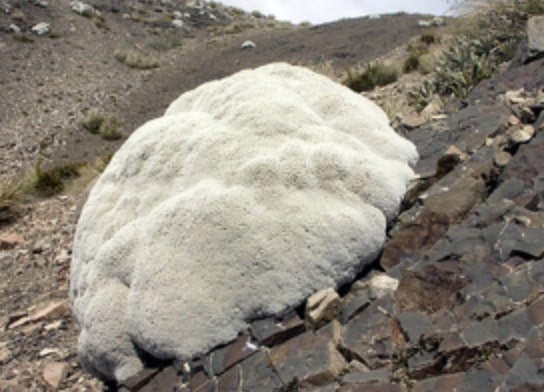
| Scientific Name | Raoulia rubra |
| Common Name | Vegetable sheep |
| Family | Asteraceae |
| Distinct feature | Small wool-like leaves in clusters |
The Vegetable sheep belongs to a cushion-like plant family called, Asteraceae.
When viewed from the top of rocky mountain surfaces, it looks like a large white-grey clump of grazing sheep.
It has a fleshy, rock-like texture and small leaves that grow in clumps of sponges. This feature holds moisture to help it survive the desert climate.
The Raoulia rubra is indigenous to New Zealand.
17. Gastrodia agnicellus
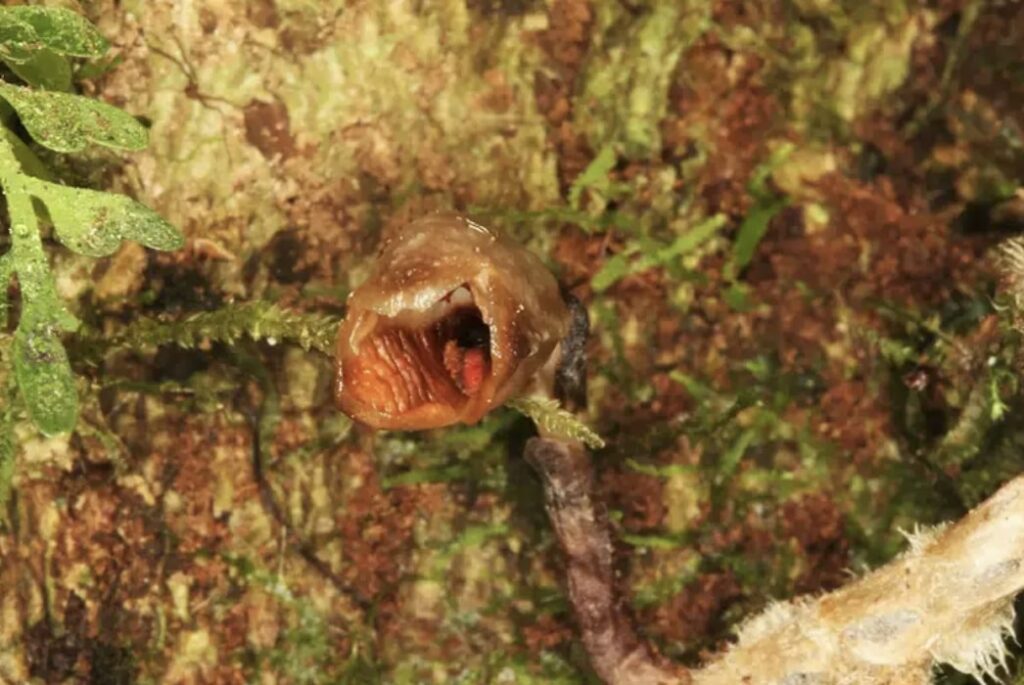
| Scientific Name | Gastrodia agnicellus |
| Common Name | Gastrodia agnicellus |
| Family | Orchidaceae |
| Distinct feature | Brown fleshy flowers with ear-like petals |
In 2020, botanists declared the Gastrodia agnicellus ugliest orchid in the world. It has small, fleshy brown flowers and a fuzzy tuberous root.
It measures 1.1 centimeters, without leaves or any other photosyntetic tissue. The orchid relies on fungi for nutrition.
Gastrodia agnicellus releases a musk, rose-like scent.
This flower was discovered by botanist Johan Hermans in the evergreen rainforest of southeast Madagascar.
18. Domingos Martins (Aristolochia cymbifera)

| Scientific Name | Aristolochia cymbifera |
| Common Name | Domingos Martins |
| Family | Aristolochiaceae |
| Distinct feature | Large kidney-shaped leaves with U-shaped balloon flowers |
The Domingos Martins has a 6 to 8 inch kidney-shaped flower with purple or brown spots.
The shape of its flower attract flies thereby making it an elaborate trap. It also emits a foul odor to attract other insects.
Once the insect enters the tube, the tiny hairs inside it prevents them from escaping.
The Aristolochia cymbifera is a vine that stays evergreen in subtropical climates. Its stem can grow from 6 to 20 feet.
19. Elephant’s Head (Pedicularis groenlandica)
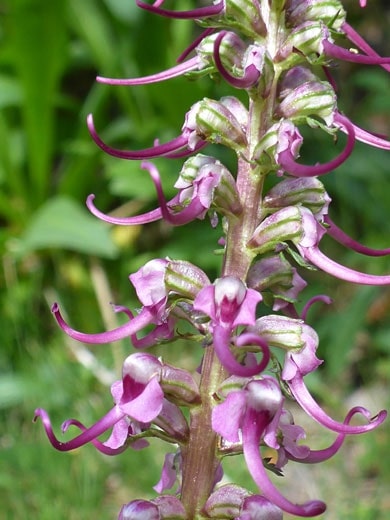
| Scientific Name | Pedicularis groenlandica |
| Common Name | elephant’s head, elephant-head lousewort, and butterfly tongue |
| Family | Orobanchaceae |
| Distinct feature | Brigh purple-white flowers with a pointed beak that curves upward resembling the trunk of an elephant |
The Pedicularis groenlandica is a flowering plant that grows up to 80 centimeters (31 inches) tall.
The top of its stem consists of bright purple flowers with white spots. Each flower curves upward resembling the trunk of an elephant while its lateral lobes are similar to an elephant’s ears.
This lousewort is a root parasite as it absorbs nutrients by piercing through the roots of the host.
The butterfly tongue is commonly found in the moist mountain meadow of North America.
20. Bastard Cobas (Cyphostemma juttae)
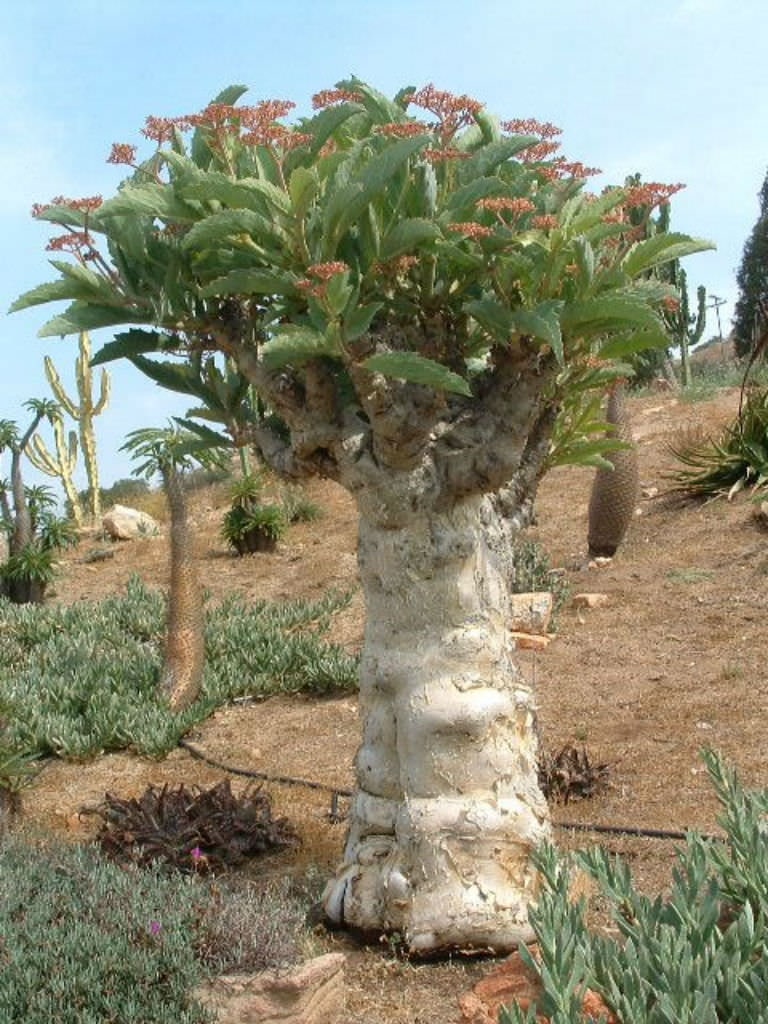
| Scientific Name | Cyphostemma juttae |
| Common Name | wild grape, tree grape, Namibian grape, Droog-my-keel, Bastard Cobas |
| Family | Vitaceae |
| Distinct feature | Swollen bottle-shaped stem with a grape-like bunch of flowers |
The Bastard Cobas is a succulent plant from southern Africa. It is a deciduous shrub that grows up to 6 feet or (1.8 meters) high.
The wild grape is a slow-growing plant known for its bottled-shaped stem. It has a spreading crown of papery bark and a fleshy stem that serve as a water reservoir during drought.
Its pinkish-red flowers grow in grape-like bunches but are toxic and inedible.
Ugly or not, these flowers still attract tourists, because of their unusual characteristics.
Out of these 20 flowers, which is the ugliest for you? Share your thoughts in the comment box!




